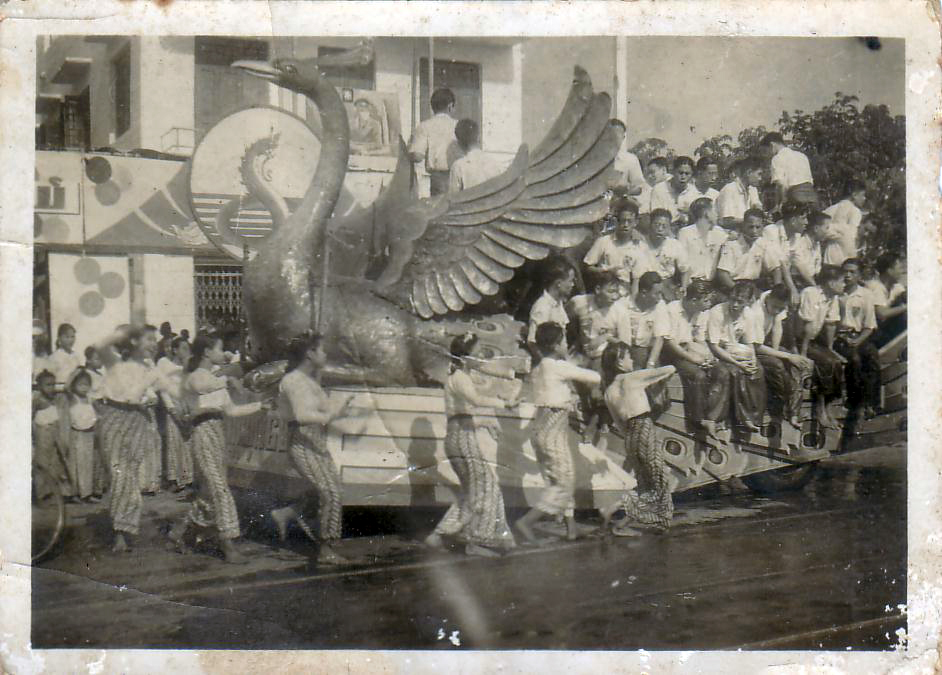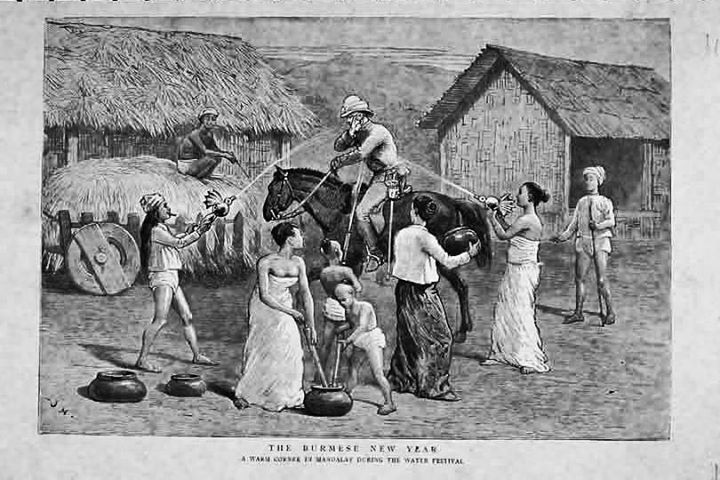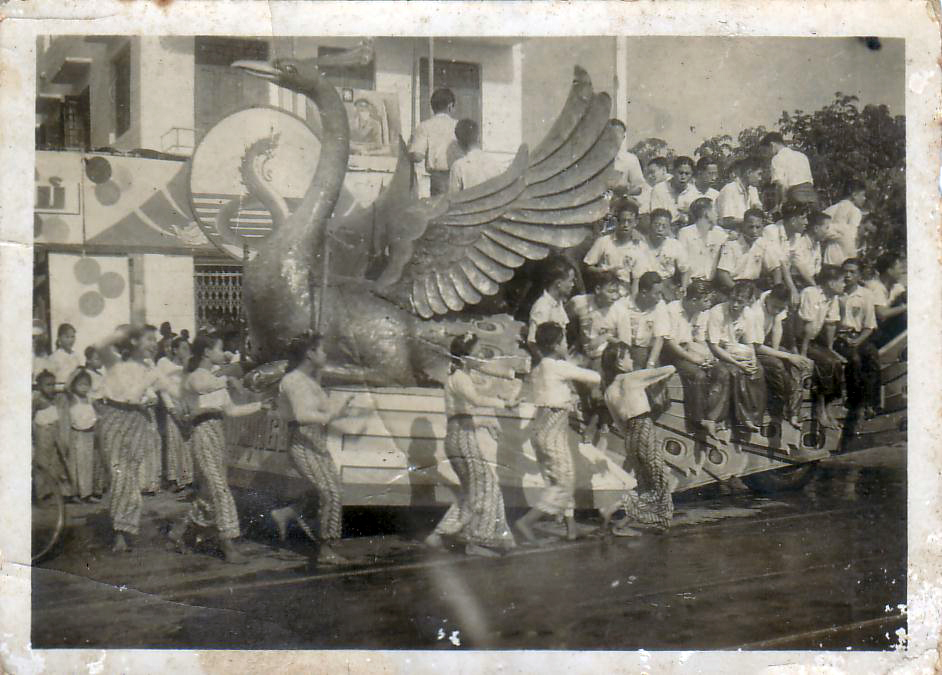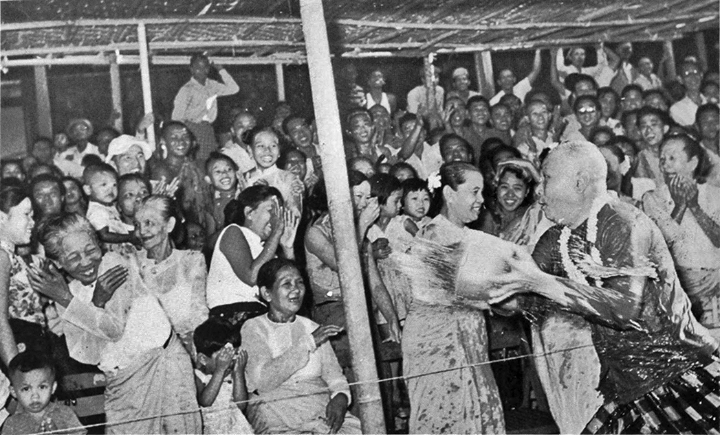

An Englishman discovers Thingyan, 1888

Nehru, Nasser and U Nu during Thingyan festivities in 1955

Myoma Troupe, 1958

Prime Minister U Nu enjoying Thingyan, 1960
April
The meaning of Thingyan
The Burmese New Year is celebrated in the middle of April with the water-throwing festival known as "Thingyan". The festival's origins go back to the time of the Buddha and perhaps even before that. Thingyan (spelled saṁkran in Burmese) is derived from the Sanskrit word saṁkrānti, which is also the origin of the Thai word Songkran for the same new year festival in Thailand. Saṁkrānti means the day the sun moves from one rashi (constellation of the zodiac) to another. The new year marks the movement of the sun from the last constellation (Pisces, or Mina in Sanskrit, Tabaung in Burmese) to the first constellation (Aries, or Mesa in Sanskrit, Tagu in Burmese). This zodiac is the same one in use in the West and originated in ancient Babylon approximately 2,600 years ago. In ancient Babylonian times, the start of the zodiac on the first day of Pisces marked the vernal equinox (the start of spring). But now, because of axial precession (the slow change in the earth's rotation over millennia), the vernal equinox occurs about a month earlier (21 March), rather than during Thingyan.